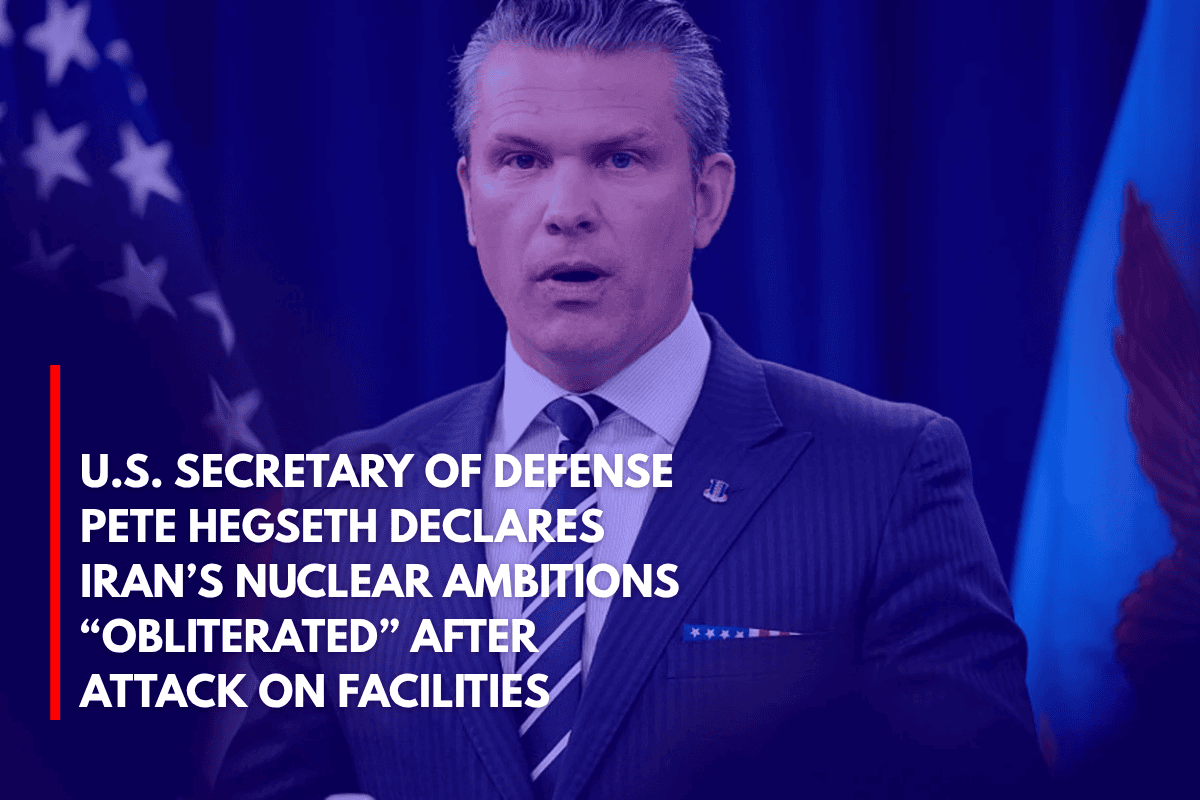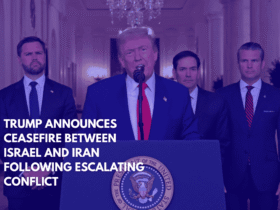Secretary of Defense Pete Hegseth stated on Sunday that Iran’s nuclear ambitions have been obliterated, following the United States’ attack on three major nuclear enrichment facilities in Iran. The statement came hours after the U.S. launched a targeted military operation, which Hegseth praised as “focused, powerful, and clear.”
A Precision Strike, Not Regime Change
In a press conference, Hegseth emphasized that the mission was not about regime change in Iran, but rather about neutralizing a threat to U.S. national interests and ensuring the self-defense of U.S. troops and Israel, a key ally in the region.
Hegseth’s remarks echoed those made by President Donald Trump late Saturday, when the president described the operation as a “destruction” of Iran’s nuclear enrichment capabilities. However, the full extent of the damage to Iran’s nuclear infrastructure remains unclear at this point.
Joint Chiefs of Staff Chairman Gen. Dan Caine’s Assessment
Gen. Dan Caine, Chairman of the Joint Chiefs of Staff, spoke to the press Sunday, confirming that the attacks caused severe damage and destruction to Iran’s nuclear sites at Fordow, Natanz, and Isfahan.
While he acknowledged the significant impact of the strikes, Caine stopped short of confirming that Iran’s nuclear ambitions had been entirely “obliterated.” He clarified that it would take some time to fully assess the battle damage.
“Initial battle damage assessments indicate that all three sites sustained extremely severe damage and destruction,” Caine said, adding that the final assessment would take more time.
Iran’s Response and Threats of Retaliation
In response to the U.S. attack, Iran’s Foreign Minister Abbas Araghchi condemned the strikes, calling them “outrageous” and reiterating that Tehran had all options available to defend its sovereignty and people.
The foreign minister’s remarks signal that Iran is likely to retaliate in some capacity, heightening the tension in the region.
Operation Midnight Hammer: A Stealthy and Complex Mission
Caine also provided details about the operation, which has been named “Operation Midnight Hammer” by the Trump administration. The operation involved more than 125 aircraft, including stealth B-2 bombers.
Caine outlined how some of the bombers launched from the U.S. overnight Friday were used as decoys, while the other bombers proceeded with minimal communications during their 18-hour flight toward Iran.
According to Caine, Iran’s air defenses were unable to detect the aircraft during the mission. Iranian fighter jets did not attempt to intercept the bombers, and their surface-to-air missile systems failed to detect the incoming U.S. aircraft. Caine praised the success of the operation, stating, “We retained the element of surprise.”
Potential Consequences and the Road Ahead
While the U.S. military has reported the successful execution of the operation, the full impact of the strikes on Iran’s nuclear capabilities remains uncertain. Both sides are bracing for the potential fallout from this escalation.
Iran has promised retaliation, and with the Pentagon’s substantial presence in the Middle East, the region is on edge as both nations navigate the complex diplomatic and military aftermath of the airstrikes.
The United States’ bold military move has significantly raised the stakes in the already volatile U.S.-Iran relationship, and the global community is watching closely for the next steps.











Leave a Reply